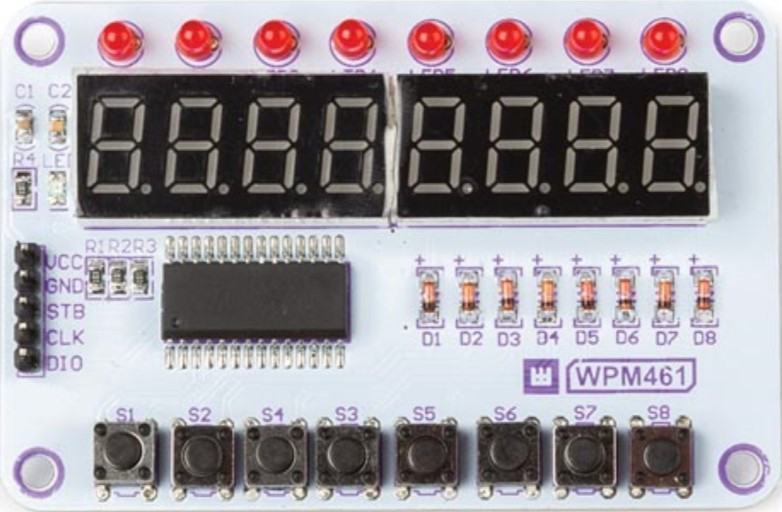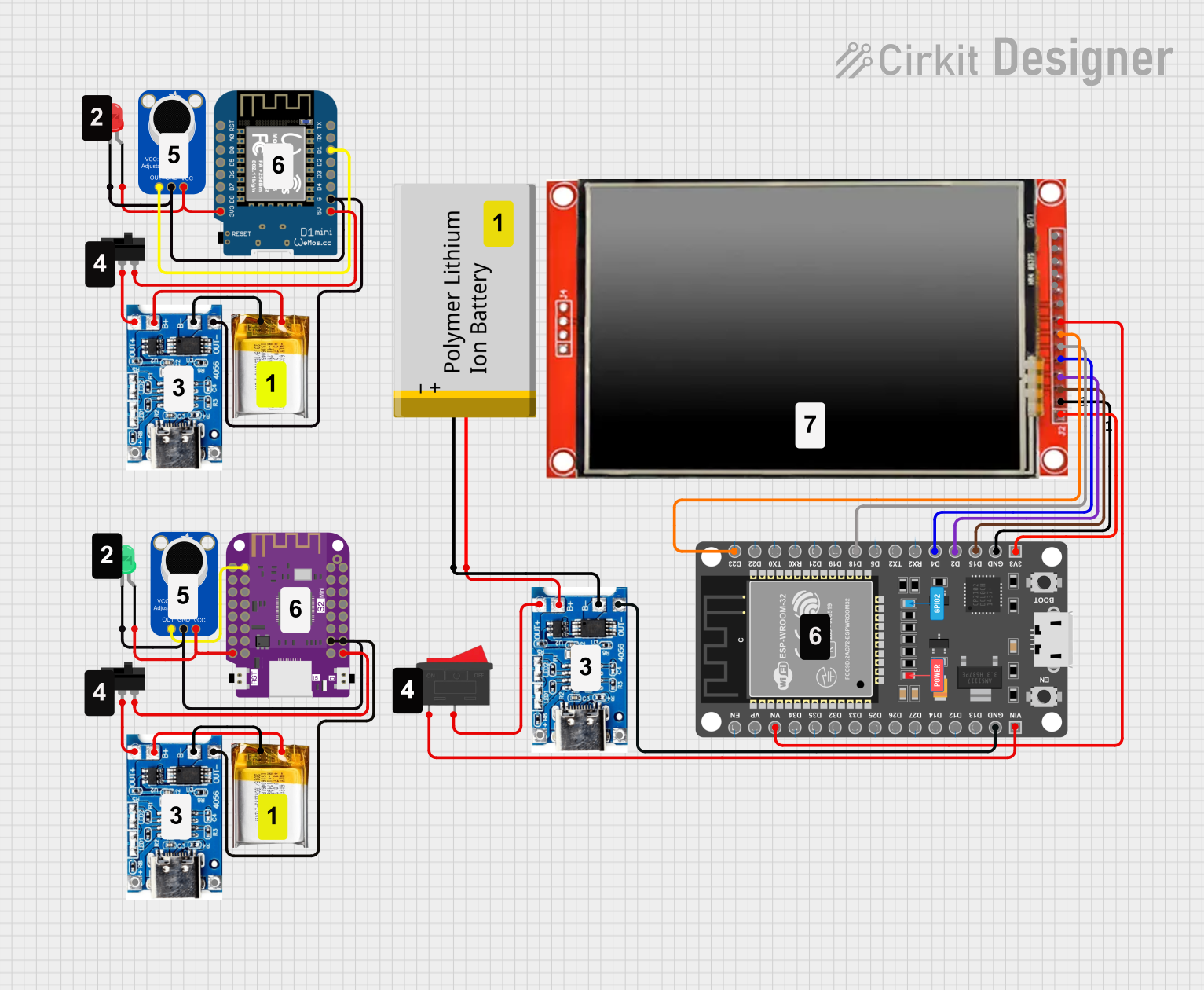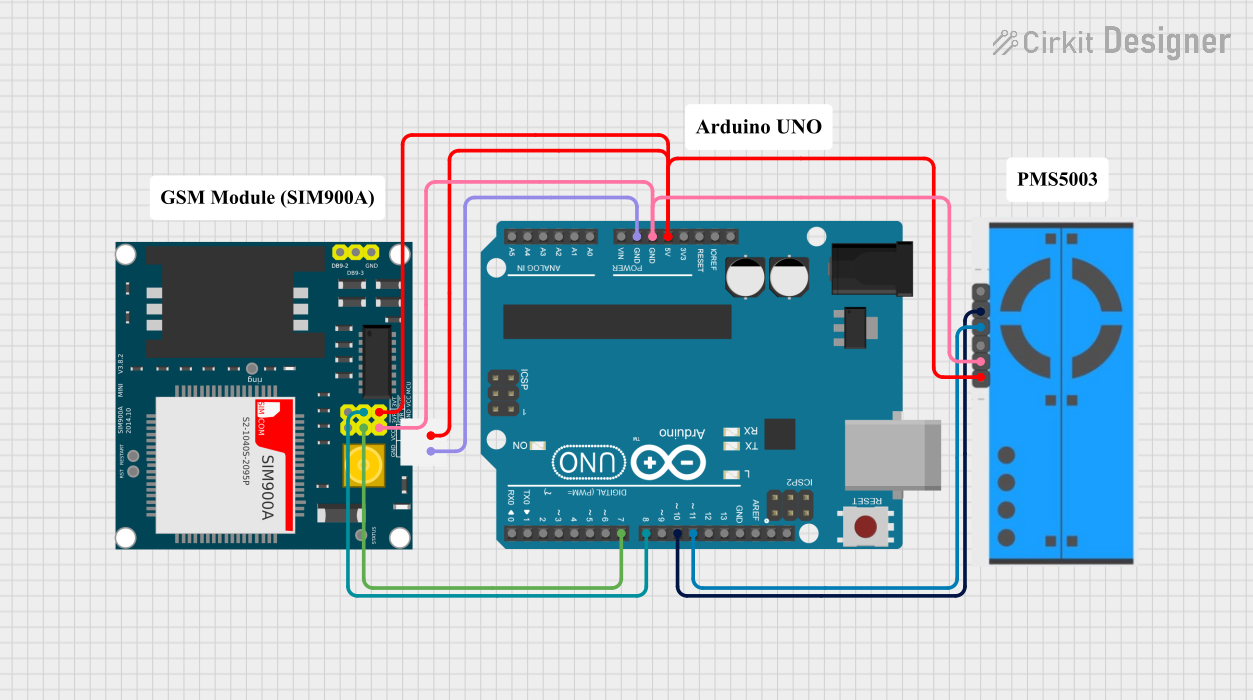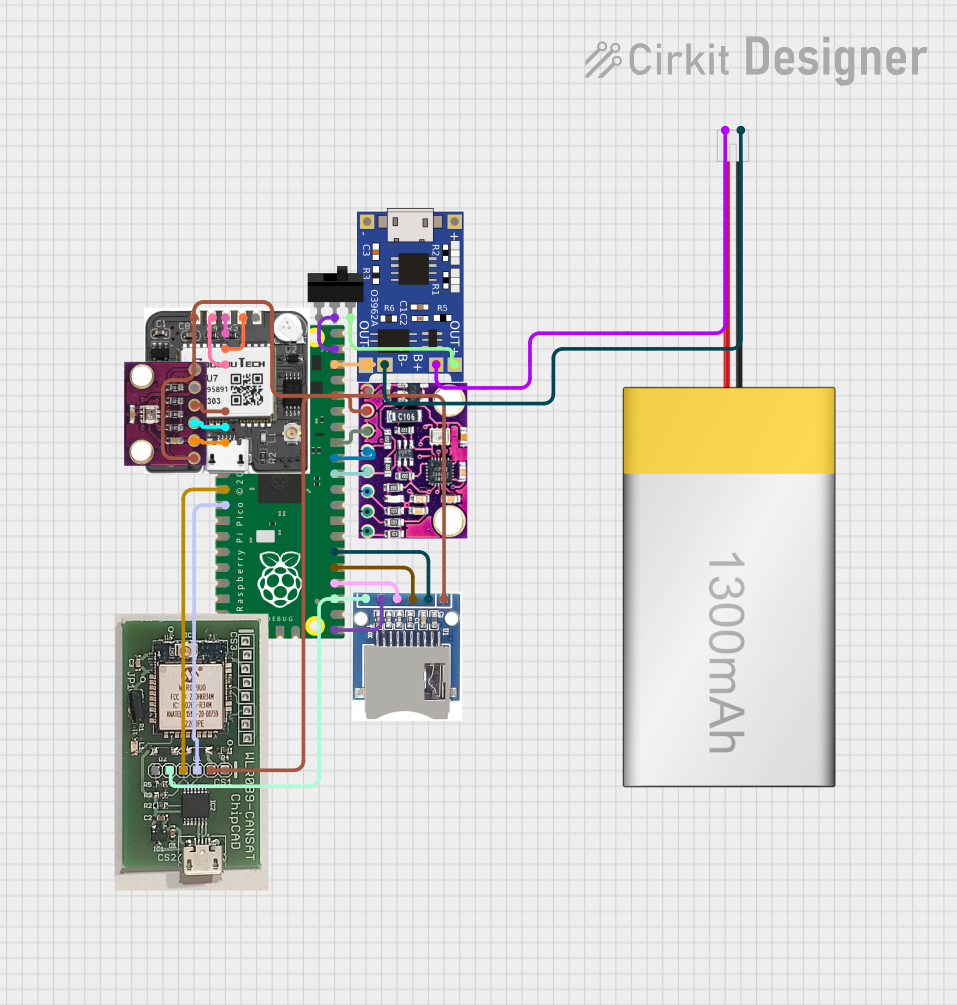
How to Use WPM461: Examples, Pinouts, and Specs

 Design with WPM461 in Cirkit Designer
Design with WPM461 in Cirkit DesignerIntroduction
The WPM461 is a low-power, high-performance microcontroller designed for embedded applications. It features a versatile range of I/O ports, integrated peripherals, and supports multiple communication protocols, including UART, SPI, and I2C. With its efficient power consumption and robust processing capabilities, the WPM461 is ideal for projects such as IoT devices, home automation, robotics, and industrial control systems.
Common applications and use cases:
- Internet of Things (IoT) devices
- Home automation systems
- Robotics and motor control
- Industrial monitoring and control
- Wearable technology
- Educational and prototyping projects
Explore Projects Built with WPM461

 Open Project in Cirkit Designer
Open Project in Cirkit Designer
 Open Project in Cirkit Designer
Open Project in Cirkit Designer
 Open Project in Cirkit Designer
Open Project in Cirkit Designer
 Open Project in Cirkit Designer
Open Project in Cirkit DesignerExplore Projects Built with WPM461

 Open Project in Cirkit Designer
Open Project in Cirkit Designer
 Open Project in Cirkit Designer
Open Project in Cirkit Designer
 Open Project in Cirkit Designer
Open Project in Cirkit Designer
 Open Project in Cirkit Designer
Open Project in Cirkit DesignerTechnical Specifications
The WPM461 microcontroller is designed to balance performance and power efficiency. Below are its key technical details:
General Specifications
| Parameter | Value |
|---|---|
| Core Architecture | ARM Cortex-M4 |
| Operating Voltage | 1.8V to 3.6V |
| Clock Speed | Up to 72 MHz |
| Flash Memory | 256 KB |
| SRAM | 64 KB |
| GPIO Pins | 32 |
| Communication Protocols | UART, SPI, I2C, CAN, USB 2.0 |
| ADC Resolution | 12-bit |
| Timers | 4 (16-bit and 32-bit) |
| Power Consumption | 5 µA in sleep mode |
| Operating Temperature | -40°C to +85°C |
Pin Configuration and Descriptions
The WPM461 comes in a 48-pin LQFP package. Below is the pin configuration:
| Pin Number | Pin Name | Functionality |
|---|---|---|
| 1 | VDD | Power supply (1.8V to 3.6V) |
| 2 | GND | Ground |
| 3 | PA0 | GPIO/ADC Input/Timer Input |
| 4 | PA1 | GPIO/UART TX/ADC Input |
| 5 | PA2 | GPIO/UART RX/ADC Input |
| 6 | PB0 | GPIO/SPI MOSI |
| 7 | PB1 | GPIO/SPI MISO |
| 8 | PB2 | GPIO/SPI SCK |
| 9 | PB3 | GPIO/I2C SDA |
| 10 | PB4 | GPIO/I2C SCL |
| ... | ... | ... (Refer to the full datasheet) |
| 48 | NRST | Reset Pin |
Usage Instructions
How to Use the WPM461 in a Circuit
- Power Supply: Connect the VDD pin to a regulated power source (1.8V to 3.6V) and the GND pin to ground.
- Clock Configuration: Use an external crystal oscillator (e.g., 8 MHz) or configure the internal clock for timing.
- GPIO Configuration: Set up the GPIO pins as input or output based on your application. Use pull-up or pull-down resistors if necessary.
- Communication Protocols: Configure the UART, SPI, or I2C peripherals in software to communicate with other devices.
- Programming: Use an SWD (Serial Wire Debug) interface or a compatible programmer to upload firmware to the microcontroller.
Important Considerations and Best Practices
- Power Management: Utilize the sleep modes to reduce power consumption in battery-powered applications.
- Decoupling Capacitors: Place 0.1 µF decoupling capacitors close to the VDD pin to stabilize the power supply.
- Reset Pin: Connect the NRST pin to a pull-up resistor (e.g., 10 kΩ) to ensure proper reset functionality.
- ESD Protection: Add ESD protection diodes on I/O pins for applications in harsh environments.
Example: Connecting the WPM461 to an Arduino UNO
The WPM461 can communicate with an Arduino UNO via UART. Below is an example Arduino sketch to send data to the WPM461:
// Example Arduino code to send data to the WPM461 via UART
void setup() {
Serial.begin(9600); // Initialize UART communication at 9600 baud
delay(1000); // Wait for the WPM461 to initialize
}
void loop() {
Serial.println("Hello, WPM461!"); // Send a message to the WPM461
delay(1000); // Wait 1 second before sending again
}
On the WPM461 side, configure the UART peripheral to receive data at 9600 baud and process the incoming messages.
Troubleshooting and FAQs
Common Issues and Solutions
The microcontroller does not power on:
- Ensure the VDD pin is connected to a stable power source within the specified voltage range.
- Check for proper grounding on the GND pin.
- Verify that decoupling capacitors are placed near the power pins.
Communication protocols are not working:
- Double-check the pin connections for UART, SPI, or I2C.
- Ensure the baud rate, clock speed, or data format matches between devices.
- Use pull-up resistors for I2C lines (SDA and SCL).
The microcontroller is not responding to programming:
- Verify the SWD connections and ensure the programmer is compatible with the WPM461.
- Check the NRST pin and ensure it is not held low during programming.
- Ensure the firmware is compiled for the correct microcontroller model.
FAQs
Q: Can the WPM461 operate at 5V?
A: No, the WPM461 operates within a voltage range of 1.8V to 3.6V. Exceeding this range may damage the microcontroller.
Q: Does the WPM461 support PWM output?
A: Yes, the WPM461 has timers that can be configured for PWM output on specific GPIO pins.
Q: How do I update the firmware on the WPM461?
A: Use an SWD programmer or a bootloader (if available) to upload new firmware to the microcontroller.
Q: Can I use the WPM461 for battery-powered applications?
A: Yes, the WPM461 is optimized for low-power operation and includes sleep modes to extend battery life.